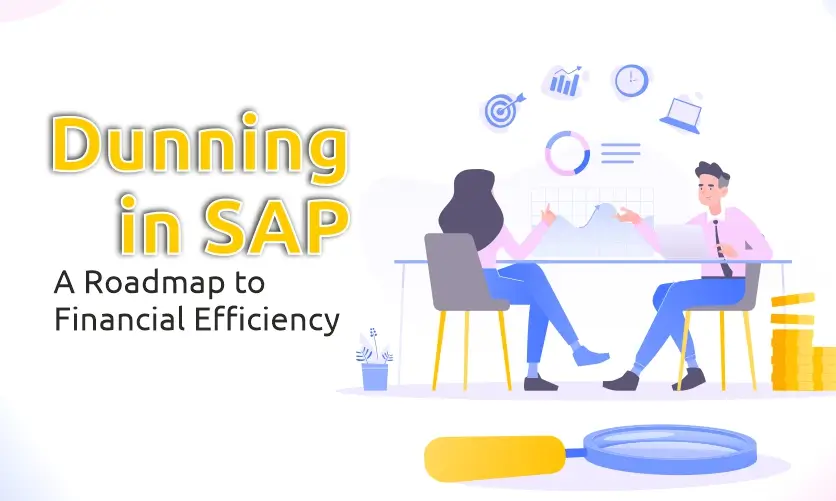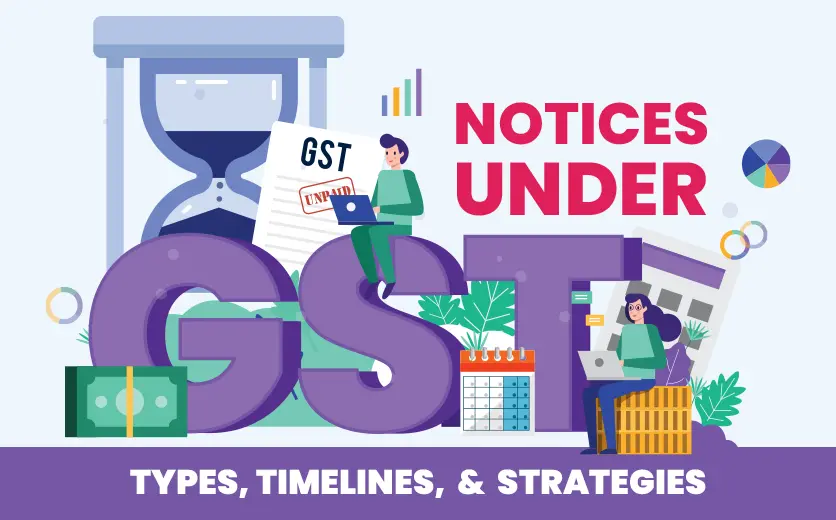
Dunning in SAP: A Roadmap to Financial Efficiency
In the ever-evolving realm of enterprise resource planning (ERP), SAP has established itself as a leading provider, delivering robust solutions for a wide spectrum of business processes. Among these, dunning in SAP plays a pivotal role in financial management within SAP. It enables organizations to streamline and automate the collection of outstanding receivables.
This comprehensive guide delves into the intricacies of dunning in SAP, unraveling its importance, configuration, best practices, and the transformative impact it can have on an organization’s cash flow.
Table of Contents
-
- Understanding Dunning in SAP: An Overview
- Configuration of Dunning in SAP: Step-by-Step Guide
- Best Practices for Effective Dunning in SAP
- Impact of Dunning on Organizational Cash Flow
- Challenges and Solutions in Dunning
- Case Study: Realizing the Benefits of Dunning in SAP
- Future Trends in Dunning: A Glimpse into Tomorrow
- Conclusion
Understanding Dunning in SAP: An Overview
Dunning, within the context of SAP, encompasses a structured approach to communicating with customers regarding unpaid invoices. This process forms an essential component of receivables management, ensuring that organizations maintain healthy cash flows by actively addressing outstanding payments. The primary goals of dunning in SAP include:
- Timely Payment Prompts: Informing customers about overdue payments to encourage prompt settlements.
- Automated Workflow: Implementing an automated dunning process to minimize manual intervention and enhance efficiency.
- Tailored Communication: Enabling organizations to customize dunning notifications based on the severity of overdue payments.
- Enhanced Cash Flow: Fostering a systematic receivables management approach leads to improved cash flow.
Configuration of Dunning in SAP: Step-by-Step Guide
- Establish Dunning Areas:
Lay the foundation by defining dunning areas, each representing a unique set of rules and parameters that govern the dunning process. - Assign Dunning Keys:
Distribute dunning keys to customers based on their payment history and credit terms. These keys determine the specific dunning process that will be applied to each customer. - Configure Dunning Levels:
Establish dunning levels, each corresponding to a distinct stage of the dunning process. For instance, Level 1 might involve a friendly reminder, while Level 2 could escalate to more assertive communication. - Outline Dunning Procedures:
Define dunning procedures to determine the sequence in which dunning levels are applied. This roadmap ensures that customers are appropriately reminded of overdue payments in a structured and timely manner. - Implement Dunning Charges:
Specify charges or interest that may be applied for delayed payments. These incentives encourage customers to settle their outstanding balances promptly. - Craft Effective Dunning Texts:
Customize dunning texts to communicate effectively with customers. Tailor messages based on the severity of overdue payments, ensuring that the tone and content of each communication are appropriate for the situation. - Associate Dunning Areas with Company Codes:
Align dunning areas with specific company codes to ensure that the dunning process aligns with organizational structures. This approach ensures that dunning procedures are applied consistently across different business units. - Schedule Automated Dunning Runs:
Set up periodic dunning runs to automate the dunning process. Define the frequency and timing of dunning activities to ensure customers are consistently reminded of outstanding payments without manual intervention.
Best Practices for Effective Dunning in SAP
- Harness the Power of Dunning Reports:
Leverage SAP’s reporting tools to gain valuable insights from dunning runs. Identify trends and patterns in customer payment behavior to refine dunning strategies and improve overall collection efficiency. - Employ a Gradual Escalation Approach:
Adopt a measured approach to dunning, starting with gentle reminders in the initial stages. Gradually escalate the tone and consequences for more severe cases, ensuring that customers receive appropriate reminders without causing unnecessary strain. - Utilize Dunning History for Informed Decisions:
Access dunning history to gain a deeper understanding of each customer’s payment patterns. Analyze past interactions and tailor future dunning strategies accordingly, increasing the likelihood of prompt settlements. - Strategically Employ Dunning Blocks:
Utilize dunning blocks judiciously to temporarily suspend dunning for specific customers or accounts. Exercise flexibility in exceptional cases, such as when a customer is experiencing financial hardship. - Maintain Accurate Customer Master Data:
Ensure that customer master data, including contact information and payment preferences, is up-to-date. Accurate data facilitates effective communication and enhances the effectiveness of dunning efforts. - Foster Integration with Credit Management:
Streamline receivables management by seamlessly integrating dunning processes with credit management systems. This holistic approach provides a comprehensive view of customer creditworthiness and payment history, enabling informed decision-making. - Provide Convenient Payment Options:
Include information about alternative payment methods or installment plans in dunning communications. Offering convenient payment options encourages prompt settlements and reduces the likelihood of prolonged payment delays.
If you are looking to learn more about SAP then visit here
Impact of Dunning on Organizational Cash Flow
- Optimized Receivables Management:
Dunning is pivotal in optimizing receivables management, minimizing the risk of bad debts, and improving overall financial health. By streamlining the collection process, organizations can reduce the time it takes to collect payments, leading to improved cash flow and enhanced financial stability. - Enhanced Customer Communication and Engagement:
Automated dunning processes enable organizations to maintain consistent and professional communication with customers, ensuring they are promptly notified of overdue payments. This proactive approach fosters transparency and builds trust, strengthening the customer relationship. - Reduced Days Sales Outstanding (DSO):
Dunning contributes significantly to minimizing DSO, a critical metric that reflects the efficiency of a company’s collection process. By expediting the collection of outstanding receivables, organizations can reduce their DSO, indicating improved cash flow and financial performance. - Strengthened Customer Relationships and Perception:
Effective dunning, when implemented with a customer-centric approach, can strengthen relationships with customers. Organizations can foster loyalty and maintain a positive brand image by providing clear communication, offering payment options, and demonstrating a commitment to resolving issues promptly. - Streamlined Financial Operations and Increased Efficiency:
Automating dunning processes reduces manual intervention, streamlining financial operations and freeing up time for finance teams to focus on more strategic activities, such as financial planning and analysis. This efficiency enhancement leads to better overall financial management.
Challenges and Solutions in Dunning
- Optimized Receivables Management: Dunning is pivotal in optimizing receivables management, minimizing the risk of bad debts, and improving overall financial health. By streamlining the collection process, organizations can reduce the time it takes to collect payments, leading to improved cash flow and enhanced financial stability.
- Enhanced Customer Communication and Engagement: Automated dunning processes enable organizations to maintain consistent and professional communication with customers, ensuring they are promptly notified of overdue payments. This proactive approach fosters transparency and builds trust, strengthening the customer relationship.
- Reduced Days Sales Outstanding (DSO): Dunning contributes significantly to minimizing DSO, a critical metric that reflects the efficiency of a company’s collection process. By expediting the collection of outstanding receivables, organizations can reduce their DSO, indicating improved cash flow and financial performance.
- Strengthened Customer Relationships and Perception: Effective dunning, when implemented with a customer-centric approach, can strengthen relationships with customers. Organizations can foster loyalty and maintain a positive brand image by providing clear communication, offering payment options, and demonstrating a commitment to resolving issues promptly.
- Streamlined Financial Operations and Increased Efficiency: Automating dunning processes reduces manual intervention, streamlining financial operations and freeing up time for finance teams to focus on more strategic activities, such as financial planning and analysis. This efficiency enhancement leads to better overall financial management.
Read more articles on SAP-FICO here
Case Study: Realizing the Benefits of Dunning in SAP
Company XYZ: Enhancing Receivables Management with SAP’s Dunning Functionality
Faced with delayed payments, Company XYZ implemented SAP’s dunning functionality to proactively address outstanding receivables. This strategic decision led to a 15% reduction in average DSO within the first six months, improving cash flow and strengthening customer relationships.
By embracing SAP’s dunning functionality, Company XYZ transformed its receivables management process, demonstrating the power of technology to optimize financial performance and foster stronger customer relationships.
Future Trends in Dunning: A Glimpse into Tomorrow
As organizations embark on digital transformation journeys, the future of dunning in SAP unveils a landscape of exciting possibilities. Anticipated trends that promise to revolutionize receivables management include:
- Enhanced Predictive Analytics: By harnessing the power of predictive analytics, businesses can anticipate customer payment behavior and proactively address potential delays, reducing the risk of bad debt.
- Blockchain Integration: The integration of blockchain technology into dunning processes holds immense promise. Blockchain’s inherent security and transparency can foster trust, streamline dispute resolution, and enhance overall efficiency.
- AI-driven Personalization: Artificial intelligence (AI) has the potential to transform dunning communications by tailoring messages to individual customer needs and preferences, leading to improved engagement and payment outcomes.
- Seamless Integration with E-Invoicing: Integrating dunning processes seamlessly with e-invoicing systems will pave the way for a more streamlined and efficient end-to-end receivables management cycle, eliminating manual data entry and reducing administrative burdens.
If you want to learn all the concepts of SAP-FICO then explore the courses here
Are You Worried, How You Will Clear SAP-FICO InterviewsBe confident! Become A Certified SAP FICO Specialist |
|
| Explore Classroom Course | Explore Online Course |
These emerging trends highlight the transformative power of technology in shaping the future of dunning in SAP. By embracing these advancements, organizations can optimize their receivables management practices, enhance customer relationships, and achieve greater financial resilience.
Conclusion
In the dynamic realm of financial management, SAP dunning stands as a cornerstone for effective receivables management. By mastering its configuration, embracing best practices, and staying ahead of emerging trends, organizations can unleash the full potential of SAP dunning to streamline processes, strengthen customer relationships, and optimize cash flows.
As technological advancements continue to redefine the financial landscape, the role of dunning in SAP is poised for further evolution, opening up new avenues for organizations to thrive in the competitive world of finance.
To fully capitalize on SAP Dunning’s capabilities, organizations should embark on a continuous learning journey, adapting their strategies to the latest developments. By embracing this proactive approach, organizations can ensure that SAP dunning remains a cornerstone of their financial management success, enabling them to navigate the complexities of receivables management with confidence and agility.





